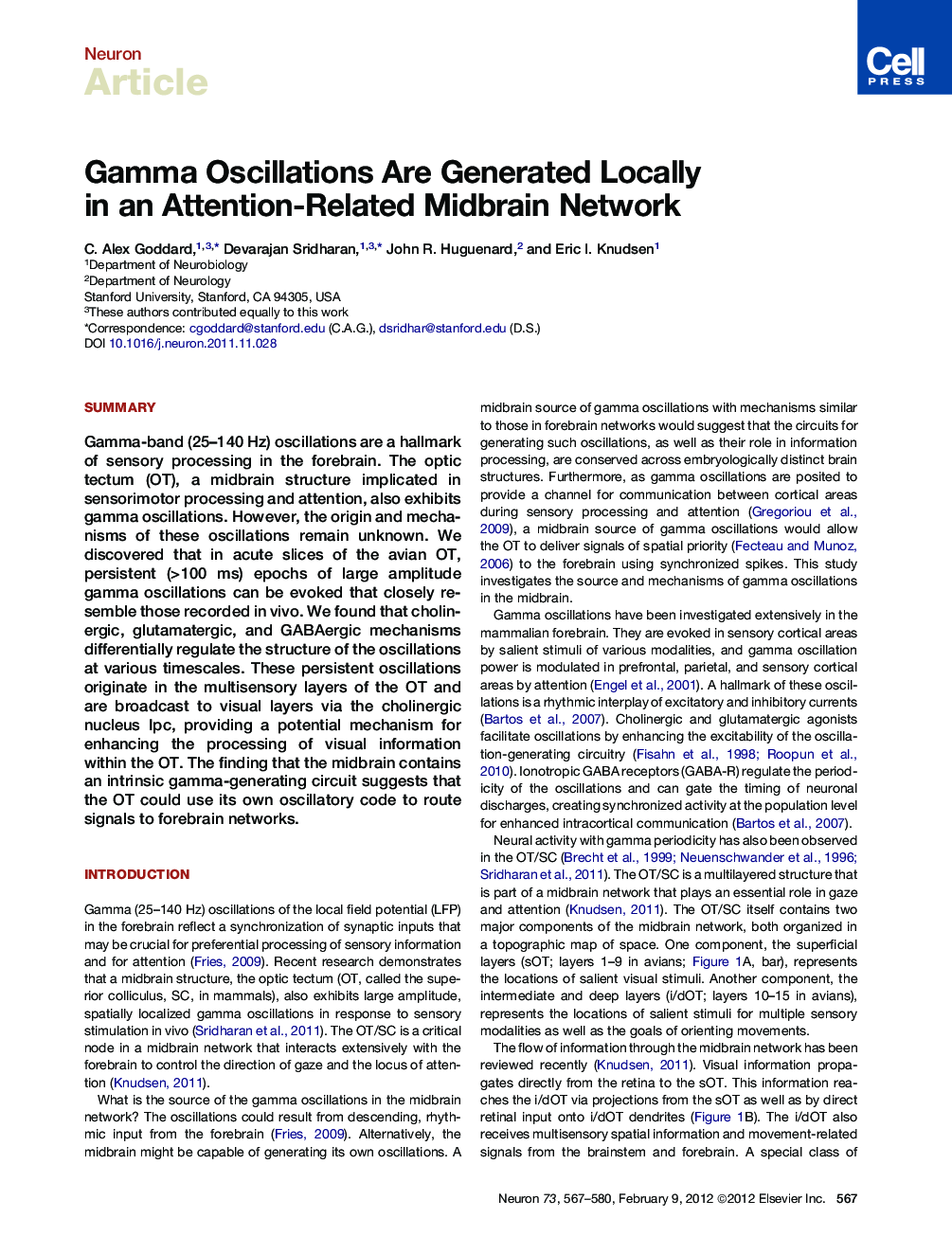| Article ID | Journal | Published Year | Pages | File Type |
|---|---|---|---|---|
| 4321497 | Neuron | 2012 | 14 Pages |
SummaryGamma-band (25–140 Hz) oscillations are a hallmark of sensory processing in the forebrain. The optic tectum (OT), a midbrain structure implicated in sensorimotor processing and attention, also exhibits gamma oscillations. However, the origin and mechanisms of these oscillations remain unknown. We discovered that in acute slices of the avian OT, persistent (>100 ms) epochs of large amplitude gamma oscillations can be evoked that closely resemble those recorded in vivo. We found that cholinergic, glutamatergic, and GABAergic mechanisms differentially regulate the structure of the oscillations at various timescales. These persistent oscillations originate in the multisensory layers of the OT and are broadcast to visual layers via the cholinergic nucleus Ipc, providing a potential mechanism for enhancing the processing of visual information within the OT. The finding that the midbrain contains an intrinsic gamma-generating circuit suggests that the OT could use its own oscillatory code to route signals to forebrain networks.
► Evoked gamma oscillations in the OT in vitro resemble those observed in vivo ► GABA-Rs, Ach-Rs, and NMDA-Rs modulate oscillation structure at various timescales ► Persistent gamma oscillations are generated by a circuit in the deep, multisensory OT ► Oscillations are broadcast to the superficial, visual OT via a cholinergic nucleus
